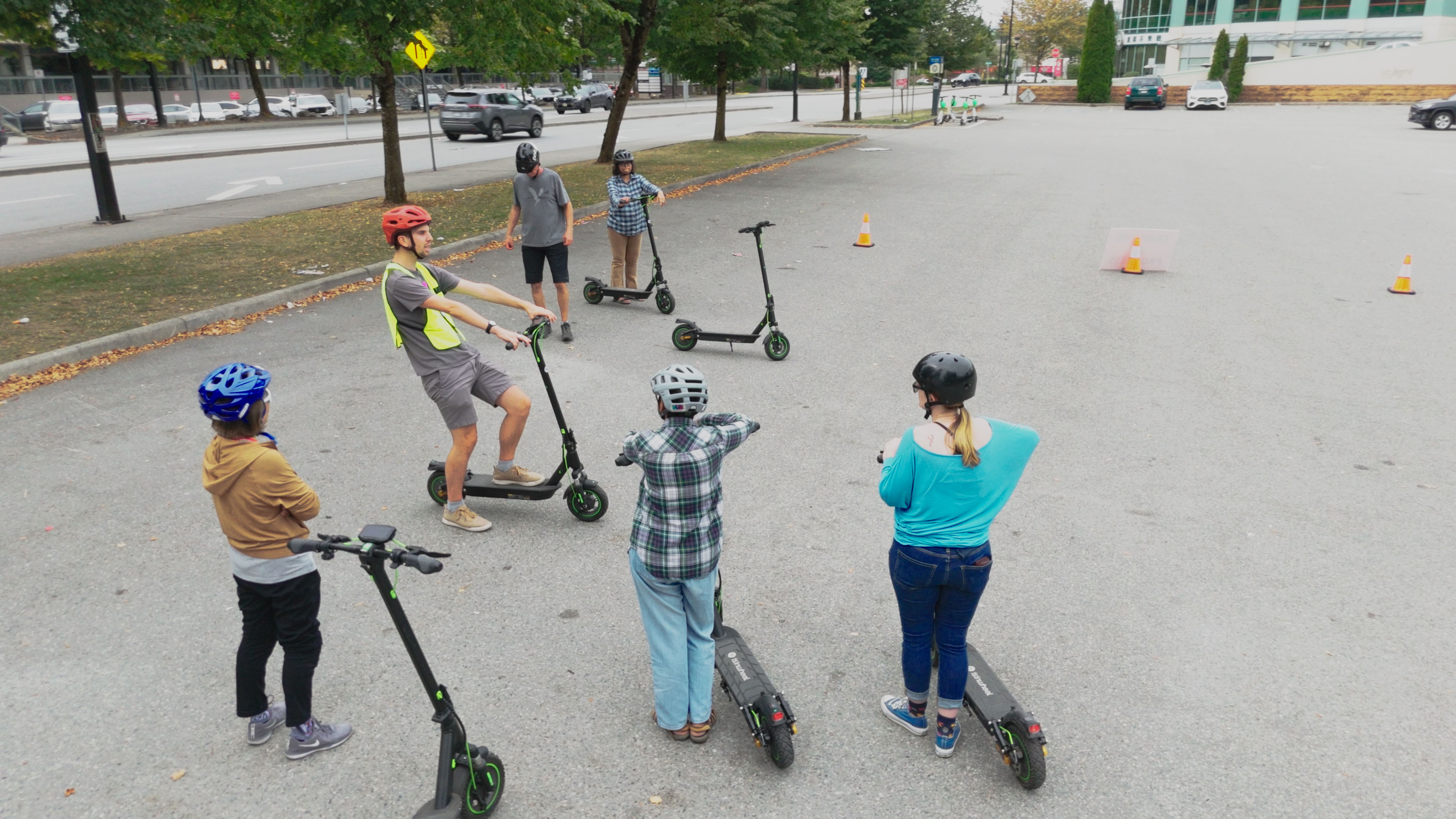
Here’s what to keep in mind before hopping on one.
E-scooters are showing up everywhere, from neighbourhood streets to downtown sidewalks. They are quick, affordable and better for the environment than cars. But with their popularity comes a big question: are they safe?
“E-mobility can really change the way we get around, especially for short trips. It helps make transportation easier for more people,” says Tobin Copley, lead, Injury Prevention and Safety Promotion at Fraser Health.
But the question of safety is an important one. The data from around the world shows a pattern. When scooters first arrive in a community, the number of injuries spikes.
“The first few rides are higher risk,” Tobin explains.
Design plays a big role.
“E-scooters are inherently unstable,” Tobin says. “Small wheels, a steep steering angle and a high centre of gravity make them harder to control. When you fall, head and upper body injuries are common.”
Unlike bicycles, which give riders three points of contact with the bike, e-scooters do not provide the same stability. Their small wheels struggle with cracks, potholes and uneven pavement, which are hazards that bikes can usually roll over.
To reduce injuries, there are important rules to follow. In B.C., riders must be at least 16 years old; scooters are not allowed on sidewalks, and they can only be used on roads with speed limits of 50 km/h or less. Municipalities can add their own restrictions, meaning the rules can change from one block to the next.
A recent Traffic Injury Research Foundation report on Micromobility in Canada advises people to start slowly when learning. Broader research has identified inexperience as an important factor in e-scooter injuries, although experienced riders may also be injured, especially while riding at higher speeds. Even with these challenges, the benefits of micromobility are hard to ignore.
“Cars are responsible for more injuries, by vast amounts,” Tobin says. “E-scooters solve a mobility problem. They reduce congestion, have a lower environmental impact, and let people get around more quickly. E-scooters and other electric micromobility devices are still quite new and always evolving, so we are still learning how to integrate them more safely into our mobility network.”
“Scooters and other forms of micromobility can connect people more seamlessly to Metro Vancouver’s transit network, offering a cheaper and often faster way to reach destinations just a short ride from SkyTrain stations and bus routes,” says Thomas Thivener, manager of Transportation Planning for the City of Coquitlam.
To help riders build confidence, the City of Coquitlam recently offered e-scooter and e-bike skills training sessions in partnership with HUB Cycling. The program, funded through Fraser Health’s Vision Zero grant, gave people hands-on practice with steering, braking and signaling before they took to the streets.
Luke Auffenberg, one of the instructors, said the learning curve is steeper than many expect.
“The steering is a lot twitchier than on a bike, and it actually took me five or six hours before I felt comfortable taking one hand off the handlebars to signal,” he explains. “Until then, I tell people to use the scooter’s built-in signals or even just their elbow to make their intentions clear.”
So, what can riders do to stay safe?
Tobin’s advice is straightforward: “Please wear a helmet. Keep your speed down, especially when you are new or when you’re riding near pedestrians and always ride solo—e-scooters are designed to safely carry only one person at a time. Only use legal devices that max out at 25 kilometres an hour and make yourself familiar with your local municipality’s regulations. And keep kids off them until they are old enough.”
E-scooters carry risks, like any mode of transportation, but with awareness, skills, and caution, they can be a sustainable way to travel short distances while building healthier communities.


